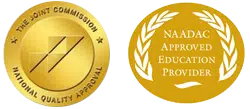Witnessing someone suffering from drug overdose can be very traumatizing. According to the Centers for Disease Control, overdose deaths have topped 100,000 annually. With such high statistics, it is important to know how to respond if you think you’re witnessing a drug overdose. Knowing what to do if you do observe a drug overdose will help you remain calm so you can help the person experiencing the overdose and get them the help they need.
Observe Symptoms
Someone who is suffering from a drug overdose will have some obvious symptoms. The sooner you are able to recognize these symptoms, the faster you can get help to that individual. Some of the most common overdose symptoms include the following:
- Unresponsiveness
- Gasping or irregular breathing
- Shallow breathing or no breathing at all
- Clammy skin
- Blue lips or pale skin
The appearance of one or more of these symptoms means that the person is in serious trouble. When you notice any of these symptoms, it’s imperative to get help right away. The person’s life depends on your ability to act quickly.
Call 911
When a person is suffering from an overdose, time is of the essence. They need medical attention as soon as possible. Once you’ve recognized their symptoms and realize they are in grave danger, you must call for emergency help. The sooner you can make that call means the sooner they’ll get the emergency services they desperately need. While waiting for emergency services to arrive, stay with the person and put them on their side to prevent choking. While it may seem like an agonizingly long wait for emergency personnel to arrive on the scene, they will likely arrive quickly and will take over. It is important to stay with the person until help arrives.
Administer Naloxone
Most people don’t carry naloxone. However, if you do happen to have access to it, you should administer it to the individual as it will temporarily reverse the effects of the drug overdose. This drug will only work if opiods are present in the person’s system. This drug blocks the effects of the opiod on the brain which allows the person to stay conscious and breathing. Anyone with access to naloxone can administer the life-saving drug to someone who is overdosing. Ideally, it should be given within two to three minutes of the person overdosing.
Perform CPR
If the person is not breathing and there is no pulse, you should begin administering CPR. This should be done until emergency services arrive. Once they are on the scene, emergency medical technicians will take over and continue performing CPR until there is a pulse and the person is breathing.
Drug addiction is a vicious cycle that takes a toll on everyone involved. Not only is the addict taken down by the addiction, but also family members and friends. They are constantly worried about the addict and worried about an overdose. If you or a loved one is suffering from addiction just know that help is available. Baystate Recovery Center offers a clinical approach to drug addiction treamtent. Our caring and compassionate staff are ready to help you or your loved one overcome addiction and lead a life full of meaning and purpose. Call us today so we can help you.
Baystate Recovery Center, a clinically Infused 12-Step Treatment Center for Drug and Alcohol Addiction, was founded by two partners in addiction treatment services, John Checchi and Michael Wilson.



